Fushimi-Inari: Off The Beaten Track
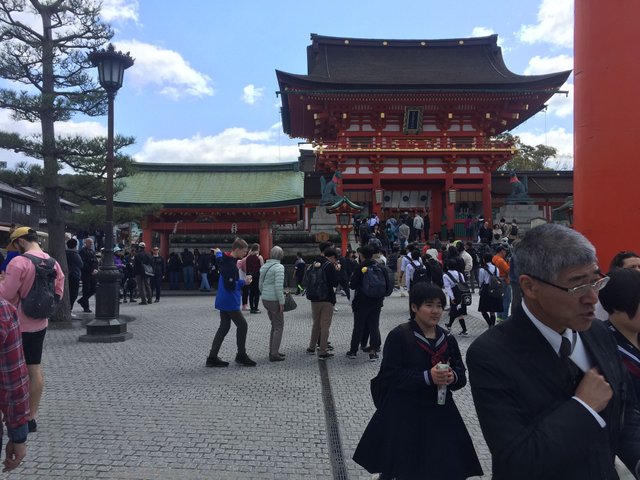
Shadows on the mountainside
The Fushimi Inari-Taisha is a Shintō shrine located in Fushimi, Kyoto. It is located on Mount Inari, and dedicated to the deity of that name. It dates back to the early Heian period, and has been expanded and built over the centuries.
It's very popular with tourists, with the stunning Tower Gates that lead to the main shrine at the base of the mountain. And everyone will be familiar with pictures of the Senbon Torii gates that line the main pathways up the mountain to the many tsuka shrines for private worship.
But because this is a popular tourist attraction, the crowds honestly get in the way of enjoying what is a deeply spiritual and magical site. Luckily, I'm going to share with you the secret of enjoying this with minimal tourist interruption.
You will have to jostle your way through the crowds. It's worth starting from the very bottom, making your way under the Tower Gates up to the main shrine. Here you can buy small blessings and talismans, and donate some coins to make your own prayers at the shrines. There are lots of signs telling you how to so this, basically first wash your hands, then approach the shrine, bow, ring the bell, clap your hands twice, bow again, and then begin your prayers. From here, follow the signs and the pathway under the many torii up to the first sub-shrine, Okusha. You can get talismans and make prayers here. I've marked that shrine on the map below.
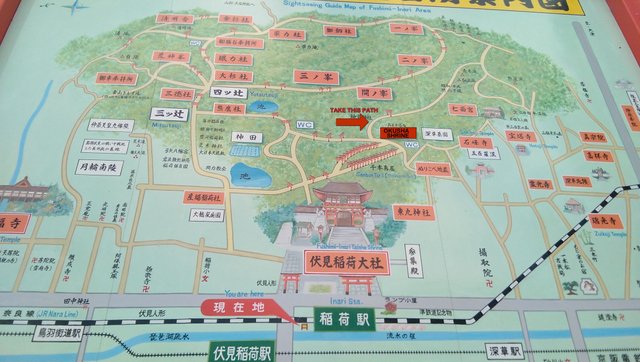
Once you leave Okusha Shrine, continue to follow the path of torii, passing a small shrine on your left.
Immediately after this, to your right there is a pathway on the right that branches off, while the torii pathway continues. On the map above, I've marked it with a big red arrow. It looks like its heading back the direction you came, and starts to go uphill (the torrii path is going down at this point), and there is a sign pointing up this track also. Most tourists just follow the main pathway lined with the torii because that's what all the tour groups and guide books tell them to do.
This track is tough in some places, but is far more rewarding. There are lots of smaller shrines and tsuka private/personal shrines, as well as some beautiful bamboo and pine forests, and some great views of Kyoto. But be prepared for a hike!!
Some of the tsuka mounds are clearly marked saying "no non-worshippers" (i.e. tourists) and no photos — please respect these. There are plenty however that you can wander through and see. Any time I stopped in one of these places, or took photos, I would go to the main altar, ring the bell, thank the kami-spirits of the place, and leave some coins.
You'll notice all the shrines are flanked by fox statues. The fox represents the messenger of the god Inari, who carries messages between humans and deities. The spirit of the fox was very much present on the mountain, and although there are lots of "non-worshippers", the energy of this mountain is still very strong.
The sound of the forests here are enchanting, broken occasionally by a crow or another bird. I would certainly recommend walking along this track with great reverence and meditate on what your heart wants, allowing whatever arises to do so. Use the shrines to contemplate on these thoughts/feelings, and don't forget to thank Inari and the local spirits of the place. Shintō after all is a spirituality deeply entrenched with the land, so connecting with her in such places will connect you with something deep inside you also.
This track takes a good 60 minutes (or thereabouts) to get you to the top of Mt Inari (233m above sea level). It will lead to a small road with private dwellings, so don't think you've wandered off or get lost. Keep following the road, and you eventually get to a stepped pathway that is quite steep going up the mountainside, past homes and private shrines. Eventually, you will find yourself back onto the main torii pathways and the main tsuka shrines that line the peak of the mountain.
Please be mindful however that there may well be people praying at their shrines up here, so don't go stomping around and making noise. Generally, I found that Japanese people are a quiet people, and crowds of gaijin tourists constantly chattering loudly does go against sensibilities. But, that is your choice how you choose to behave.
There are small shops here selling souvenirs, but also food and sake for offerings to the shrines — they aren't for human consumption. But you can get drinks and ice creams. But carry your rubbish with you and dispose of it in bins once you're back down the bottom of the mountain.
I highly recommend coming here. Allow yourself half a day. And also be mindful that prices are a little higher in the shops and stalls at the base of the mountain.
The easiest way to get here is to catch a train to Fushimi-Inari Station, which is on the Keihan Line.
Location information
● Fushimi Inari Taisha, 68 Fukakusa Yabunouchicho, Fushimi Ward, Kyoto, Japan
Related link
● http://inari.jp/en/
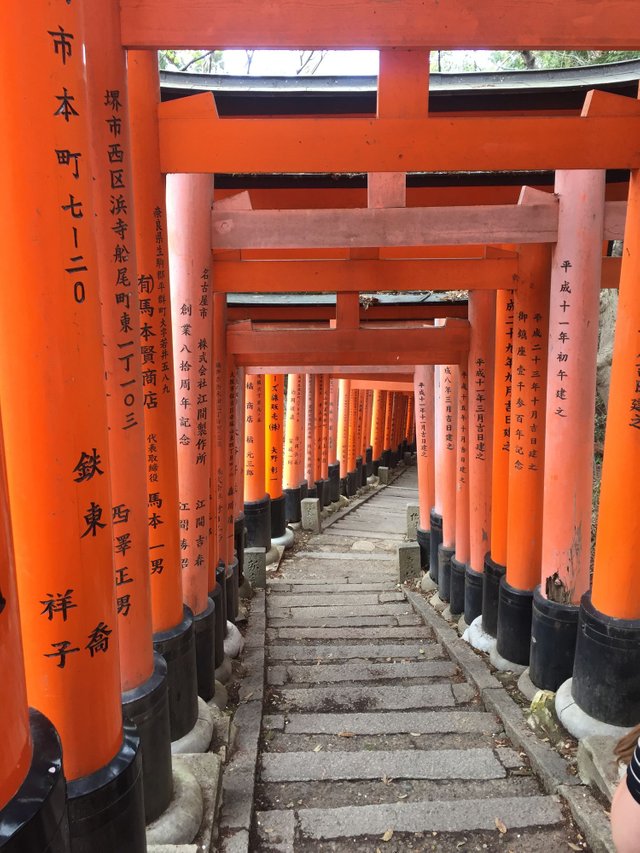
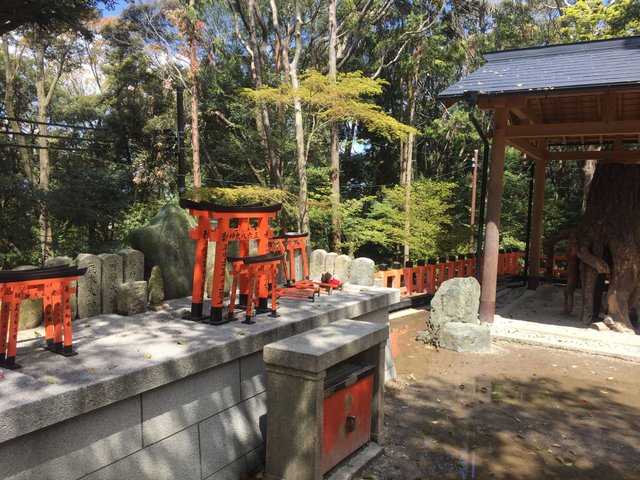
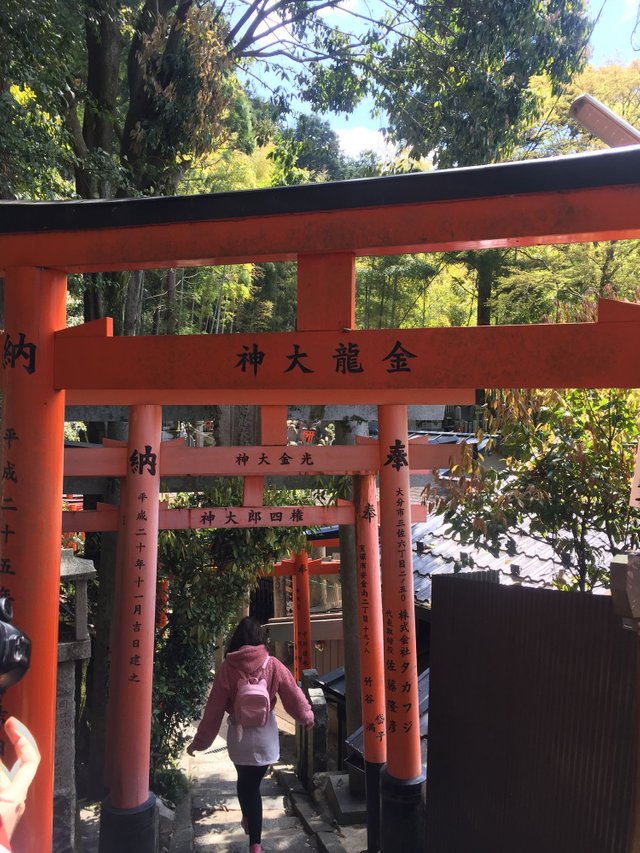
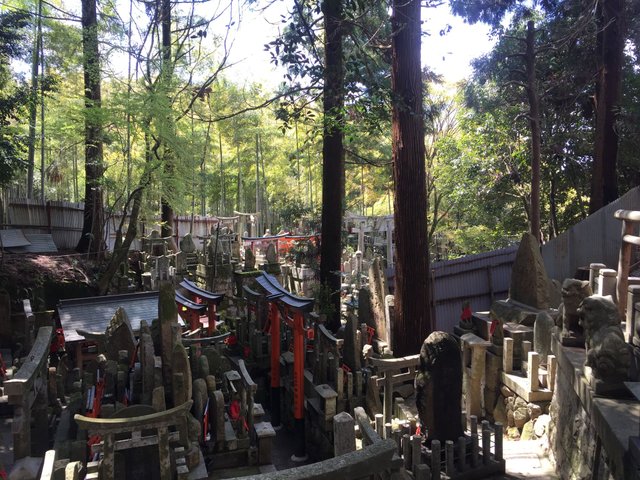
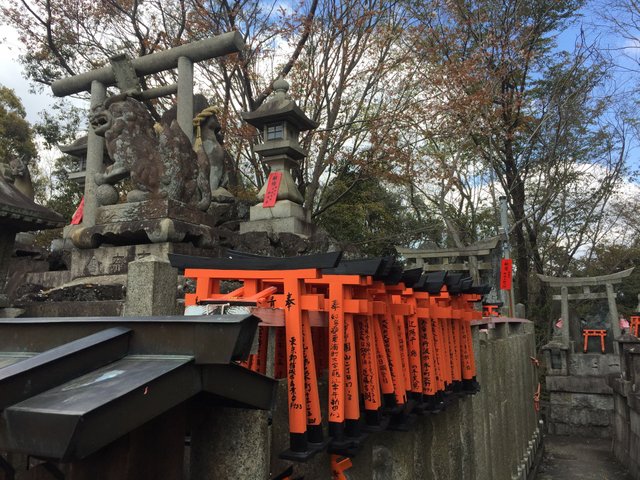

Congratulations, Your Post Has Been Added To The Steemit Worldmap!
Author link: http://steemitworldmap.com?author=peterloupelis
Post link: http://steemitworldmap.com?post=tt20190417t143408621z
Want to have your post on the map too?
I just visited there last Tuesday, a lot of tourists both Japanese and foreigners.
Hiya, @itchyfeetdonica here. I just curated your post to our daily Travel Digest #487 and upvoted it through @steemitworldmap. If you enjoy what we do, consider supporting us by:
Vote for the Daily Traveldigest
Follow our curation trail
Delegate Steempower
The more support we get, the more we can give back! :)